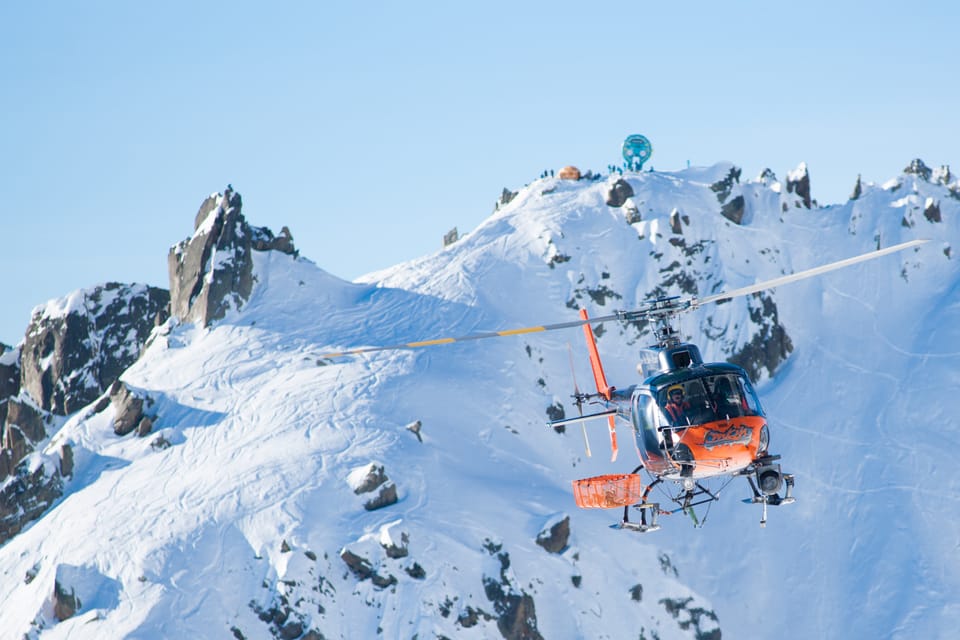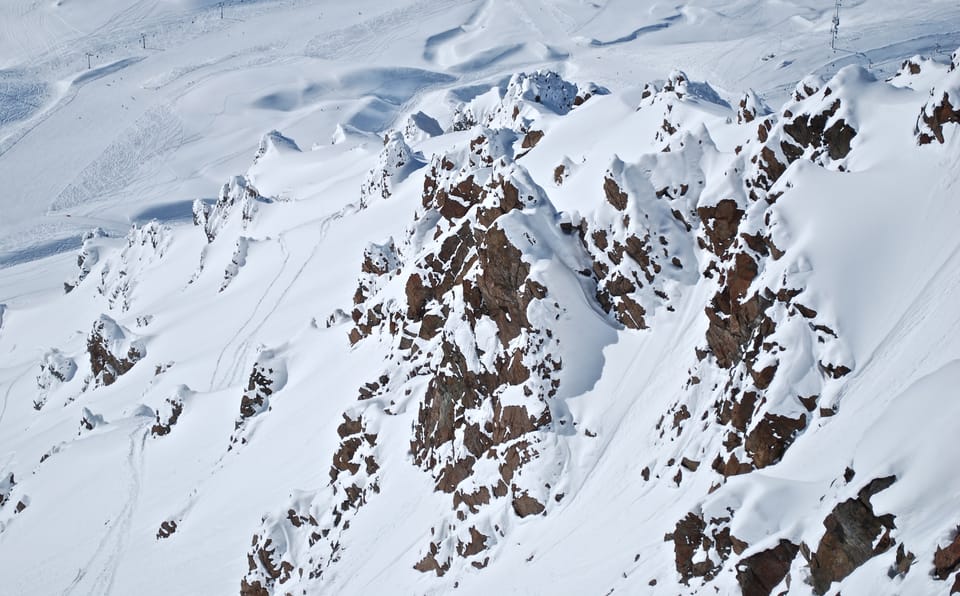Eco Heroes

The snowsports holidays we all love can sometimes be tough on the environment. But in every part of the industry, passionate pioneers are working hard to give them a sustainable future. Rupert Mellor goes out to investigate who the leaders of the eco movement are in the winter sports industry and discovers just a few of the initiatives of athletes, resorts and brands who are going that one step further to help our planet out.
ACTIVISM
For Gretchen Bleiler, US Olympic medallist and four times X Games champion snowboarder, days of rain and a melting halfpipe at 2006’s FIS World Cup in Saas-Fee, Switzerland were a wake-up call. ‘I’d seen Al Gore’s movie An Inconvenient Truth that year, and now here was evidence before my eyes that climate change is real and already affecting the mountain communities that I loved. And when I won silver at the Turin Olympics later that year, I realised I had a platform to start spreading the message.’
Since then, Aspen-based Bleiler has designed Oakley’s first eco collection, created her own range of reusable bottles and cups, spoken at countless schools and lobbied at Capitol Hill with Protect Our Winters (protectourwinters.org), the awareness-raising organisation founded in 2007 by pro freerider Jeremy Jones. Now with 130,000 supporters worldwide, it’s a powerful voice aimed at influencing policy to protect the environments that support more than seven million jobs in the US alone, and encouraging broader sustainable practices. It’s work that dovetails with the pioneering efforts of France-based advocates Mountain Riders (mountain-riders.org) and I am Pro Snow (climaterealityproject.org/pro-snow), an initiative of Al Gore’s Climate Reality Project, harnessing the passion of outdoor sports communities all over the world to demand change.
‘We are living in dark times, with Trump’s decision to pull out of the Paris Agreement and dismantle all the good work that Obama and the Environmental Protection Agency had done,’ Bleiler says. ‘It’s really frustrating. But you can choose fear, or you can choose hope, and my POW colleagues didn’t sit and sulk too long. I’m actually really excited about what we’re doing. We can give up or we can fight to get our environment and climate back in shape. Right now I feel that, as a global society, we’re at the gate on this issue, and about to drop in for our Olympic run. And I choose hope.’
RESORT MANAGEMENT
Long hailed a US trailblazer in sustainability, Aspen, Colorado, continues to raise the bar. In a radical recent move, Aspen Skiing Company has partnered with the nearby Elk Creek coal mine, capturing its waste methane and converting it into as much electricity as the company uses annually, while neutralising a gas that has 25 times the global warming impact of CO2.
It’s not alone. All over the world resorts are greening up their acts, through innovations such as renewable energies, energy-generating buildings, high-tech slope management and many more. Flims Laax Falera in Switzerland is working towards stopping the use of fossil fuels by 2020, and already powers the equivalent of 5000 homes with wind power. Austrian resorts including St Anton and those in the eco award-winning SkiWelt Wilder Kaiser led the way producing only chemical-free artificial snow – now the norm – and minimise its production with GPS-fitted groomers that measure exactly where it’s needed. And Val d’Isère-Tignes in France recently became the largest ski area in the world to be Green Globe-certified.
But the planet’s premier eco ski pioneer is Canada’s Whistler Blackcomb, led by Mountain Planning and Environmental Resource Manager Arthur De Jong. Now completely self-sufficient in electricity since building the Fitzsimmons micro hydroelectric plant on the mountain, it has reduced waste to landfill by 70 per cent since 2000, rethought its slope design approach to conserve much more natural habitat and constantly invests in more energy-efficient infrastructure.
‘When we started our journey to better environmental stewardship in 1993, environmental thinking was definitely not mainstream for companies,’ says De Jong. ‘Because I was business trained, I knew that whatever we did, it had better have a strong economic footing, because as well as protecting our resort, we wanted to inspire other companies beyond ski resorts to change their practices. Just making Whistler Blackcomb ‘zero-footprint’ in terms of emissions and waste by 2030, which is our commitment, and an ambitious one, is of itself taking a teaspoon to the Titanic.’
With the entire tourism industry in his sights, De Jong’s aspiration recently took a leap forward with the resort’s 2016 acquisition by ski behemoth Vail Resorts. ‘When Vail bought us, they assessed what kind of environmental strategy they would take, they studied the likes of Nike and Google and so on, and they came back and signed up to our zero-footprint strategy, mandating it to all their 11 world-class resorts. That is powerful’.
TRAVEL
A glimpse of railway track through a cramped transfer coach window was all it took for Daniel Elkan to ask, isn’t there a better way to get to the mountains? Quite apart from the tedium and discomfort of the standard air/road transfer model, an estimated 57 per cent of resort skiing’s carbon emissions derive from travellers’ journeys to their destinations, and Elkan, appetite whetted by his first snowboarding trip, embarked on a mission to make clean, convivial rail travel the carriage of choice for snowsports holidaymakers.
In 2009, his information website and travel agency snowcarbon (snowcarbon.co.uk), launched, and has since arranged more than a thousand rail-powered ski packages, and helped tens of thousands of travellers custom-make their own trips – each producing just 10 to 15 per cent of the emissions caused by equivalent air and road journeys. ‘Destinations and tour operators have been very supportive,’ says Elkan, who’s also a Snow Enthusiast contributor, ‘but train companies still haven’t cracked a way to make booking simple, and popular services like the legendary Snow Train have been discontinued. We need their help to enable more travellers to switch polluting, cramped and boring air and road trips with fun, sustainable journeys by train.’
He’s not the only one helping snowsports fans tread more lightly. Undiscovered Mountains (undiscoveredmountains.com) is an eco-aware multi-activity tour operator which works with small local businesses to benefit local economies. It offers its customers carbon offsetting and donates to sustainability campaigners Tourism Concern each time a winter holiday guest takes up its ‘Eco Challenge’ – building an igloo to spend a night in. It has even recently launched its first itinerary which avoids all single-use plastics.
Travel tech platform Much Better Adventures (muchbetteradventures.com) meanwhile works to harness the power of adventure sports to conserve wild environments. It incentivises local businesses and communities to operate sustainably and has set up the Much Better Foundation to directly fund conservation projects. And right now its founders are talking to NASA about developing a ‘citizen science’ adventure which would see backcountry skiers map snowpacks for climate change analysis.
CONSUMER PRODUCTS
It’s been a while now since outdoor clothing brands took up the challenge of ethical production. Props must go to Patagonia (eu.patagonia.com), which began championing eco-friendly fabrics and sustainable manufacturing decades before its competitors, and still leads on environmental and social responsibility. Of more recent arrivals, Picture (picture-organic-clothing.com) and Planks Clothing (planksclothing.com) are currently winning eco fans for their ambitious environmental credentials, while Van Loon Sport (vanloonsport.com) is pioneering a knitting technology that makes base layers with zero fabric wastage.
Accessories are stepping up too. Park City, Utah’s Soul Poles (soulpoles.com) handmakes handsome and super-durable ski poles – and selfie sticks – from bamboo and recycled materials, and Drysure’s (drysure.co) boot driers, which need no power source, just the occasional recharging bake in the oven. were named one of Protect Our Winters UK’s top five eco ski products this year.
But snowsports’ essential hard goods – skis and snowboards – have been slow to join the party. Liberty Skis’ (libertyskis.com) use of bamboo has made it one to watch, while eco-conscious snowboarders can shop lighter at Capita (capitasnowboarding.com), Niche (nichesnowboards.com) and Arbor (arborcollective.com). Meanwhile, London-based Nix Snowsports’ (nixsnowsports.com) made-to-measure and bespoke skis and snowboards incorporate materials such as bamboo and non-toxic resins.
But ski maker Grown (grownskis.com) – billing itself an ‘outdoor creativity lab’ – is an altogether greener beast. Less a commercial manufacturer than an ambitious business experiment co-founded by an engineer and an academic working in the fields of sustainability and mountain economies, it produces a small number of high-performance skis using materials and methods which dramatically reduce conventional impacts like no modern ski before, while also creating a positive environmental and social legacy. Its first ski, launched in 2007, won ISPO’s first ever eco ski design award the following year. Its latest, whose production yields a 47 per cent lower climate footprint than a conventional ski, won again this year.
‘Our skis are made from 70 per cent certified sustainable woods,’ says co-founder Dr Tobias Luthe, ‘and our most recent model is made mainly from fast-growing paulownia, which can be grown in European mountain areas, so materials need to travel much less distance to us. In fact we’re now growing paulownia and hemp, whose fibres we use instead of emissions-causing glass or carbon, in the Italian mountains to see if that could stimulate new economies for the kinds of communities which are struggling nowadays.
‘Our main goal is not to sell skis, it’s to explore new business models and ways interconnected businesses and services can interact holistically, not just to minimise negative impacts, but also to create regenerative legacies, and to make it possible – and fun – for people to consume in a more environmentally friendly way.’
MOUNTAIN INFRASTRUCTURE
Unsurprisingly, when it comes to the heavy, expensive machinery and systems that help tens of millions of downhillers get their kicks all over the world, it’s the big-name destinations that generally have most to shout about. But in 2011, tiny Tenna – population 112 – in Switzerland’s Safien Valley bagged a world first with its new $750,000 T-bar.
While there are now numerous solar- and wind-powered lifts around the world, Tenna’s 450-metre long lift was the first to be powered by solar panels which follow the sun’s path to capture every last ray. Mounted on overhead cables, its 82 rotating photovoltaic ‘wings’ produce 21 per cent more energy than fixed panels, and around 90,000 kilowatt hours per year, more than four times the amount the lift uses. The excess is routed to the local power grid.
‘In the lift’s first years we had a lot of new interest’, says Edi Schaufelberger, President of the Tenna Skilift Cooperative. ‘Even as a small cooperative, we wanted to show that commitment to sustainability pays off, and our visitor numbers increased by about 30 per cent. Wintersports companies from other countries came to see the lift, and many schools visit to show that wintersports and ecology can coexist.’
More and more resorts are introducing alternative energy plants using fuels such as biomass to heat buildings – take a bow Lech and Söll in Austria – while the small Swiss village of Anzère has installed a wood pellet-burning heating system that powers 600 apartments, two hotels and an outdoor pool, and spa, saving 1.5 million litres of oil a year. Brixen, in Austria’s SkiWelt, offers free charging points for electric cars.
Snowcats are another major energy expense in resorts, but the next, hybrid generation using combined diesel or natural gas and electricity, is just two or three years away.
But perhaps the most contentious energy investment is snowmaking. Campaign group Mountain Wilderness has estimated it costs around £130,000 and 25,000 kilowatt hours to cover one hectare of piste for a season, and, with rising climates driving up demand, the pressure to find efficient solutions is on. New-generation snow cannons are already much more energy efficient – using them Whistler Blackcomb saves an estimated 1,500,000 kilowatt hours a year. And the next step is on its way. Norway’s Ministry of Culture has granted £275,000 to researchers to find an energy-efficient solution – expected to be based on domestic refrigeration technology – that can produce artificial snow at temperatures above zero degrees, while generating almost cost-free heating for homes.
 This story was originally published in Snow Enthusiast magazine. Read the full issue free at http://magazine.snow-forecast.com/snow-enthusiast-sf-2018#!page1
This story was originally published in Snow Enthusiast magazine. Read the full issue free at http://magazine.snow-forecast.com/snow-enthusiast-sf-2018#!page1




